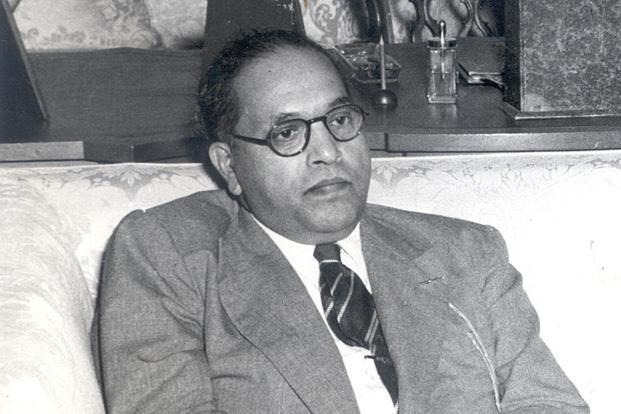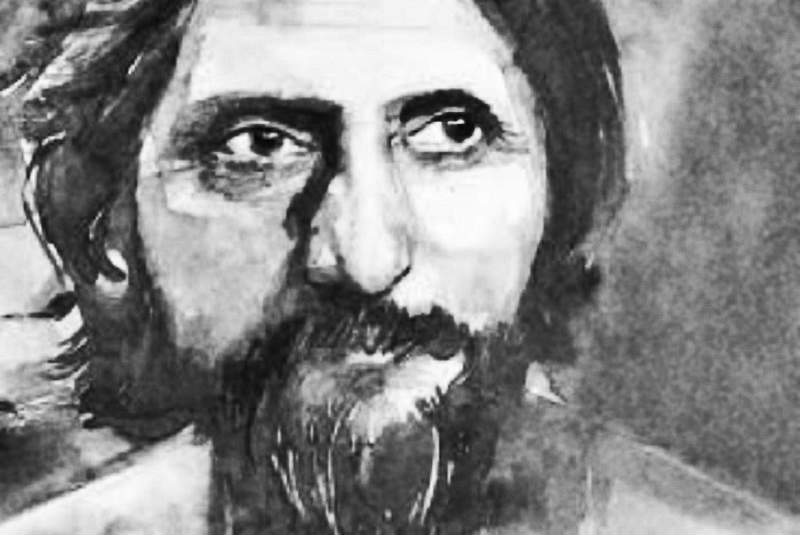To arrive at an understanding about any concept it is important to understand and ponder upon the involvement of different factors in that concept. Those concepts could be existential questions, and reasons among a host of other things. Manovrati is a story written by well-know modern Hindi-Urdu writer, Munshi Premchand. The story was written in May 1932. The story revolves around a woman sleeping on a bench in an open park. The young woman becomes the topic of discussion, speculations and questions by men of all ages who happen to see her sleeping.Premchand’s work depicts a rational outlook, in this particular story he uses characters of women, both young and old as well as men, both young and old. This story raises some important, evident and straight questions about women’s identities, powers and authorities that dictate her choices and decisions, the role of education inside and outside the home, traditional and modernist perspectives of looking into the concept of womanhood, and how public and private spheres are interlinked into all these domains. This article engages with these dimensions vis-a-vis some questions on womanhood and femininity during the 20th century, when Premchand was composing this story. The article also seeks to probe as to how women internalise such roles.
Who Really is a Woman?
Who is a woman? What is the identity of a woman? It is enmeshed in social structures, practices, rituals, cultures and customs. It is reproduced and legitimised by institutions like the family, religion, caste, education, law, media and state. If there are points of divergence then there are some points of commonalities as well. Womanhood is a temporal and a spatial dimension. It is diverse with spaces, be it public or private and urban or rural, with socio-economic class, with religion and caste playing fundamental roles in shaping it.
However, Premchand’s story portrays some different identities of a woman. In the very first line of the story, Premchand defines a woman who is lying on the bench in Gandhi Park situated in Varanasi, as beautiful. Here, a woman’s physical attribution is constrained in her physical beauty. Further in the story the very first identity given by a man to the woman is prostitute. A woman who is sleeping on a bench in a public park, has been called a prostitute, because of sleeping in an open space, being alone without her husband or father i.e her owner. Here the belonging-identity of the woman i.e to whom she belongs, becomes a question.
Suddenly a new identity comes after observing that she is wearing vermilion (sindoor), a visible symbol of being married, that she could be a wife or somebody’s daughter-in -aw. The men passing by are commenting on her shameless behaviour as a married woman. A behaviour which is not acceptable to even other women, who are passing by with their eyes down in the park. They are feeling disgusted because of another woman behaving shamelessly and inadequately. Why? Because this is not the expected and accepted behaviour of a good woman and a married woman as she is responsible for the dignity of her family and her society.
The subservience of the wife to the husband, a central ingredient to the idea of pativrata, meaning, fidelity to husband i.e woman should be faithful and loyal to her husband. The idea of the pativrata with its connotations of auspiciousness and prosperity, is the necessity of serving the men. Using a word like serving depicts that there is a power relationship between husband and wife, where the power is intrinsic. Also, this power equation concludes the presence of an owner, who is superior. For a woman of any class/caste, the primary religion has to be a pativrata which basically involves organising the house and serving the husband. The kind of service a wife is providing with good looks is important to make the husband happy. Here the identity of the woman lying on the bench is in question. Being a married one, there is a certain expectation that a dutiful married woman would never cross any limits to deny those expectations. However, the characters in the story are posing some expectations from a woman who is a prostitute also, in the story it is mentioned that she should be shameless, then only she would define the characteristics of that identity.
Besides the identities given to the woman in the story by different characters, there are some categorised identities given to women, these identities are those of the daughter, mother, wife, sister, daughter-in-law etc. Training to be good daughters-in-law was a primary lesson parents were meant to give their daughters. This is an identity for an ideal woman. Such women come to the park for fresh air, to walk and to play with flowers and plants. Whereas, a woman sleeping in a park in the day time is not acceptable because she is living that moment as per her choice, that space is chosen by her, she is outside the boundaries and most importantly she is alone, there is no husband, no father, and no brother. She is not supposed to possess a desire for anything that does not come through, or is not related to her husband. By the act of desiring something else, she has terminated her need for her husband. And in absence of men, a woman is of Vaishya Manovrati( a prostitute’s temperament) and she is trying to persuade or attract other men. Why does it not come to anyone mind that she could be a doctor, a teacher, a transgender besides possessing a host of other identities. Being with so many identities, the question remains the same in the conversation between two young men, who is she?
Confining a Woman With the Chains of Patriarchal Expectations
As the identity is not defined, there is always a question, where does she belong? There is always a boundary of spheres designed for a woman in our society and by our society including both men and women. The plot of the story is based on the sphere in which a woman is present. These two spheres are public and private. Why is it unusual that a woman is sleeping in the open, because that woman is a possession of someone else’s, and that possessed entity belongs to a domestic sphere. These spheres will define the identity of that woman. What is the space for a woman to sleep, how is she supposed to behave in a public space and how to dress in different spheres. There is a control on physical mobility of a woman, her free time and her interaction. It is expected that women in parks will perform certain activities only, they will jog, laugh, and play plants and flowers. Women have a marginal presence and a domestic sphere, where it is defined as a property of men.
And if she is stepping out the boundaries, there is a motive. Gandhi brought women out of their homes into the public sphere. This was an important intervention marking the beginning of an end to the culture of women’s seclusion. The early 1920’s also witnessed the beginning of the activities of the Women’s Indian Association for promoting women’s agency in the public arena for women. Here also the leading force is a male, a superior and powerful male. And the idea behind this involvement is building a nation inside home. Idea of preparing working labouring and protecting males for Nation has been a devoting task performed by Mothers, but being into the sphere called ‘Home’. One important sphere is the school. Who all are going to school and receiving an education? In 1910, Gopal Krishna Gokhle excluded girls from his scheme of compulsory primary education. The desire to teach male children is the consequence of the prospect which knowledge opens of wealth and honour, and since their girls cannot enter into any sphere of active labour in the world, they do not feel any incentive towards their education. Such debates clearly represent the mirror of the society in which Premchand writes this story, that both identities are not allowing that woman to justify her presence into that sphere.
Education: a Boon or a Bane?
Thorough mental training of women beyond the ideal of ‘a good wife and mother’ is equally insistent on the agency of women in deciding what their education should consist of. Education will not make much progress if a woman is to be confined to such learning as the men of her locality think suitable for her. Women need intellectual training. She needs an education which is not designed especially for her. But the opposite of this has happened, Swami Dayanand Saraswat’s conception of the objectives of women’s education are limited. He says women should learn grammar, religion, medicine, arithmetic, handicraft, as a matter of course. For without the knowledge of these arts they cannot distinguish right from wrong and behave in respect to their husbands and children. Sardar Dayal Singh speaks ‘the object of female education in this country is to make better mothers, sisters and wives, and therefore why should girls be taught what boys are taught’. This shows that society demands some suitable subjects especially for women. These subjects are practical, concrete and relevant to the life of a woman, which would help her to cater her home and related responsibilities. This would make them moral and a patriarchal society would be able to control her. Theory, abstract, and distinct, knowledge should be prescribed for the dominant group. In the story the men say, “You cannot call it cultured and civilised.”
Why? Because it is against morality. The whole story is revolving around the question of how could she. Such kind of behaviour is not digestible or acceptable, because the kind of education society has imbibed in a woman does not create such end results, so there is a fear of losing out the control, there is a fear of individual choices. These fear functions at both the places inside and outside the home. Krishna Kumar explains these fears at three levels. One is fear of bodily injuries while playing sports. This creates an anxiety about a distant consequence, such as marriage. Second is sexuality, there is a communicative gaze of adults to control a girl’s sexuality to force her to achieve an identity of an acceptable woman. Third is fear of freedom from a fully merged/dissolved into socially authorised identities. Since the beginning they have been learning submission to be at inferior status. The idea of freedom should be about freedom from fears arises from the idea of child rights. This idea of freedom, enjoyment, and free from boundaries is absent from the lives of girls and women. Besides family various other institutions affect the upbringing of a young woman like education, religion and caste.
In the time and context of the story, the woman who is sleeping is seen as immoral, because she is outside the dignity of the boundary of her limits. She has been called a prostitute, because her way of behaving is not as per a moral woman is asked to behave. She is an evil and she is capable of disrespecting the whole society. There is a fear among all characters. Also the other two women who enter in the park are not able to accept the fact that why a woman is disrespecting the whole community by doing such abhorred behaviour. The vision through which they are looking at things is a restricted one which depicts the need for the obedience of shame for a woman. Women had to continue to imbibe the code of shame. Lala Devraj, asked women to carry shame in their eyes rather than sit with their backs to the elders to hide their faces. Such statements and debates come into reality when the women herself accepts that she is inferior.
Educated woman are meant to be the opposites of the domesticated good wife of old times. And if few were giving education, then the literate daughter, the educated one was a social liability. The wealthiest and the upper caste families could not declare in public. This is the reason why all the characters want to ask and instruct that woman to go home, if she belongs to a respected family.
Is that Woman a Modern One?
In the story, no one is able to identify her identity; a new description comes out on the basis of her such behaviour. One of the men say, “Today’s women are becoming modern and forward”. This sentence claims that men have always been forward and modern, now the women are also becoming one. A glance of this social scenario reveals a society trapped between tradition and modernity. This definition of what is tradition and what is modern is different for women. Kanchana Mahadev quotes in her essay of Colonial Modernity, “Between patriarchy and imperialism…the figure of the woman disappears…into a violent shutting which is the displaced figuration of the ‘third world woman’ caught between tradition and modernisation”. A woman sleeping in a park is a result of modernity. Mary Hancock divides modernity into two, nationalist modernity and colonial modernity. She is asking the question of why to educate a woman? Why bring home-science into home? But besides giving education through colonial influence, adopting modernity for National purpose, one of the biggest pitfalls is the patriarchal attitude where men are treated as free and the women subjectively. This subjectivity comments on the clothes of that woman. She is not aware of her clothes, as her bare legs are shown, which is alluring other men. The wife had to make herself sexually attractive and available to her husband, and her relations with ‘other’ men were first sexualized, and then, that sexuality sought to be exercised by covering the woman and banishing her within the home. The husband has rights of possession over the wife’s body. How much a woman should cover, how much she can’t, is treated as modern, and it always depends on space and in the context of people. Women did not need to observe parda from their own relatives, rather it was the stranger’s especially the low caste men’s gaze against which protection was required. Here comes the question of Modernity. Is being covered, being into home, being submissive called Tradition. Premchand’s story is continually asking the question. The woman in the story is modern, because she is not invisibilizing herself i.e she is drawing everyone’s attention towards her. Though the identity is lost, this has been clearly and loudly called that she is a Modern Woman.
Major Takeaways from Premchand’s Story
Premchand’s story has asked many questions, it starts with a question on the identity of the woman, and ends on a very radical note. When at the end two women get to the identity of the female protagonist, that she is a married woman belonging to an upper caste, known family, they ask her to help her. They are now concerned about her; but that concern is about calling any male: owner of the woman. All the other identities are discarded now. Before that they were in dilemma, to help her or to criticise her. Being ill, and belonging to a known family is acceptable. But those questions have always been a posed on the identity of a woman who is alone and out? There are some assumptions, when it asks a woman to be at home, in her boundaries, we are assuming that she is at home and nobody will get attracted towards her besides her husband. These assumptions lead to a very blurred identity for women in our society.
The most important question this story raised is regarding what education the other characters have attained and what is their mentality. What are the reasons, structures, factors creating such a mentality? All the identities given to her are very contrasting and judgemental. Either she can be a Kulvadhu or a Vaishya, why is everyone suspecting her, and why only women are questioned. The only category which can define her is either as a mother or a wife, and the internal differentiation within the category ‘mother’ is never mentioned, even obliquely. Many women display a conceptualisation of themselves as ‘women’. Regardless of whichever community or institutions they belonged to, women worked within a categorisation that represented them through negation, repression and opposition. Their actions could be radical, but the representations of them were as merely liberal or more typically as conservatives ones, this is why at the end of the story she is told, “ You should have come along with a male counterpart” Her identity is back to a wife/sister. She herself says, “Why, there was no such need”. This woman believed that she is a self-respecting individual and is sufficient on her own.
Premchand is very strongly presenting the questions which are visible inside the story, as well as asking some questions which are outside the story, which a reader could ask for himself or herself.
After reading the story, a very important question that we must think about is regarding the differential educational exposure that we allow women and men in our societies. Are we truly committed to creating rational, independent and self-sufficient women who are confident & assertive or are we only moulding women into submissive, non-argumentative and dependent beings who can be oppressed by a male dominated society?
Isha is a Post-Graduate research-scholar at the School of Education , Ambedkar University, Delhi.













